Explore The Tea Capital Of India With Jorhat In Assam In 2025
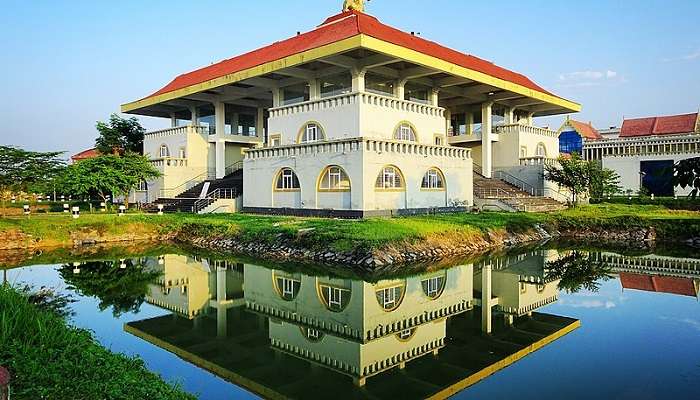
Nestled in the heart of Assam, Jorhat stands as a vibrant testament to northeastern India’s rich culture and natural beauty. Known as the “Tea Capital of India,” this charming city offers a unique blend of history, tradition, and modernity. From lush tea gardens that stretch as far as the eye can see to ancient Ahom-era monuments, Jorhat captivates visitors with its diverse attractions. The city’s bustling markets, serene Brahmaputra riverbanks, and warm hospitality provide an authentic glimpse into Assamese life. Whether you’re a history buff, nature enthusiast, or culinary explorer, Jorhat promises an unforgettable journey through one of India’s most enchanting regions. Join us as we uncover the hidden gems of this captivating destination.
History Of Jorhat
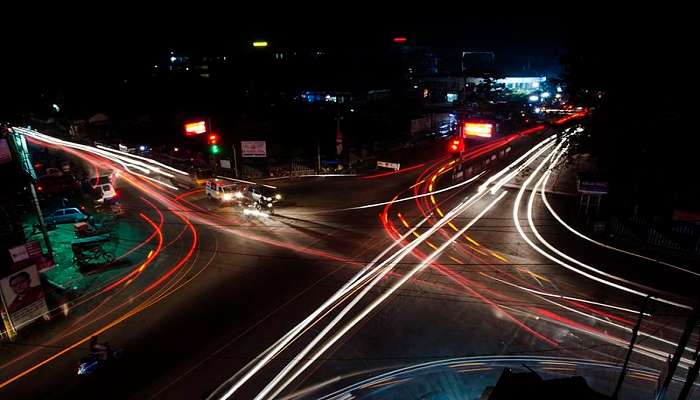
Jorhat, a city in the Indian state of Assam, has a rich history. It was the last capital of the Ahom Kingdom, which lasted for at least 37 years. The town was established near the Dichoi River, and several markets, such as Phukanar Hat and Mashar Hat, were set up nearby. This led to the town being known as Jorhat, which means ‘twin markets’. During the Moamoria rebellion, Jorhat (then known as Dichai) gained importance. The Ahom premier, Purnananda Burhagohain, set up camp at the Dichai fort to keep out the Moamoria rebels. He built the Bibudhi Garh, also known as the perplexing fort. In 1794, the Ahom capital was shifted from Rangpur to Jorhat, where it remained until the fall of the Ahom kingdom in 1838.
The Ahom royalty built many tanks around the capital city, including Rajmao Pukhuri, Borpukhuri, Buragohain Pukhuri, Bolia Gohain Pukhuri, Kotoki Pukhuri, and Mitha Pukhuri. Jorhat was a flourishing commercial metropolis at that time. Under British rule, Jorhat continued to develop. In 1885, the Jorehaut Provincial Railway, a narrow-gauge railway, became operational. This contributed significantly to the region’s rapid growth of the tea industry. Today, Jorhat is known for its tea plantations and is often called the ‘Tea Capital of the World’.
Must Read: Tea Estates In Assam
Top 6 Places To Visit In Jorhat
Jorhat is renowned for its rich cultural heritage, picturesque landscapes, and vibrant tea gardens. Below are the top 6 places to visit in Jorhat:
1. Majuli
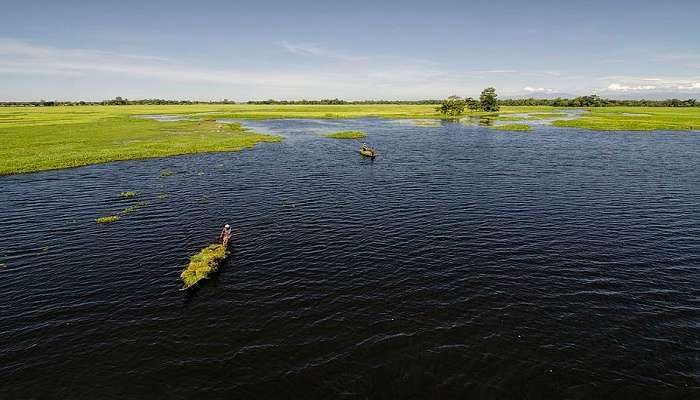
Majuli is the biggest river island in the world. It’s in the Brahmaputra River, close to Jorhat city in Assam. The island is big, beautiful, and full of culture, which is why it might become a World Heritage Site. Most people living there are tribals. They keep Assam’s culture alive, especially the neo-Vaishnavite culture. There are many Satras, or monasteries, on the island where you can watch traditional dances, learn about Vaishnavite philosophy, and see handmade artefacts. Majuli’s peaceful environment is perfect for meditation, yoga, and spiritual retreats.
There’s a lot to see and do in Majuli. You can visit the Samaguri Satra, famous for its 400-year-old mask-making tradition; the Kamalabari Satra, which has a museum of cultural artefacts; and the Mishing Village, known for its weavers and friendly people. You can also enjoy boat rides on the Brahmaputra, relax on beautiful beaches, and watch birds in the wetlands, home to many different kinds of birds, including ones that migrate there.
Distance From Jorhat: 42.2 Km
Travel Time From Jorhat: 1 Hour 49 minutes
Entry Fees: Free
Best Time to Visit: October to March
2. Hoollongapar Gibbon Wildlife Sanctuary
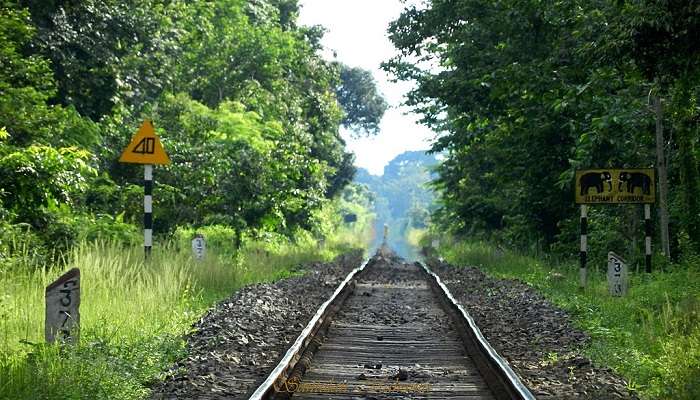
The Hoollongapar Gibbon Wildlife Sanctuary in Jorhat spans across an area of 20.98 square kilometres. It’s named after the Hoolock Gibbons, the only ape species in India. The sanctuary is home to diverse wildlife, including apes, elephants, tigers, leopards, jungle cats, civets, Himalayan squirrels, wild boars, and other mammals. Additionally, it houses many bird species and several types of snakes.
Avian enthusiasts can spot Indian Pied Hornbills, Ospreys, Hill Mynas, and Kalij Pheasants, while reptiles like Indian Pythons, Monitor Lizards, Indian Tent Turtles, and Indian Cobras also inhabit the area. Visitors can immerse themselves in the sanctuary’s verdant landscapes, witness its diverse fauna, and gain insights into its conservation initiatives.
Distance From Jorhat: 12.9 Km
Travel Time From Jorhat: 27 minutes
Entry Fees: Free
Best Time to Visit: November to April
Suggested Read: Shopping In Guwahati
3. Nimati Ghat
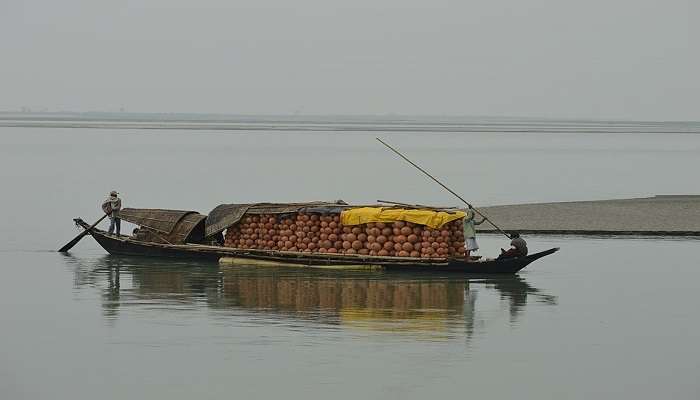
Nimati Ghat is a significant river port and the main entry point to Majuli, the world’s largest river island. The ghat is about 17 km from Jorhat city, and its importance extends beyond Jorhat, benefiting nearby cities and villages. It’s not just a port but a gateway to a unique cultural and natural experience, offering visitors a chance to explore the enchanting Majuli Island.
The ghat is particularly busy during the dry season, mainly in the summer and autumn. However, during the monsoon, the fast-flowing Brahmaputra River can make the ghat a bit risky. Despite this, boating at the ghat remains a significant attraction for tourists. Regular buses run from Jorhat city centre to Nimati Ghat, providing convenient tourist transport. The first ferry from Majuli leaves at 7:30 AM, and the last is at 3:15 PM. Whether you’re embarking on a journey to Majuli or simply enjoying the riverside scenery, Nimati Ghat offers a memorable experience.
Distance From Jorhat: 12.9 Km
Travel Time From Jorhat: 25 minutes
Entry Fees: Free
Best Time to Visit: November to March
4. Raja Maidam
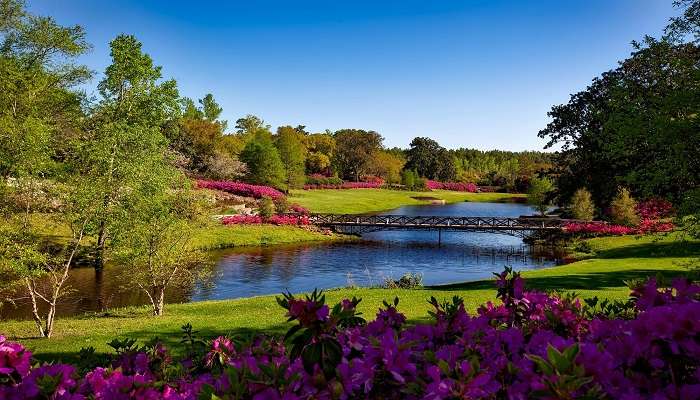
Raja Maidam in Jorhat, Assam, serves as the sacred mausoleum of Ahom king Purandar Singha, reflecting the rich historical and cultural heritage of the Ahom dynasty. This site, adorned with well-preserved dome-shaped mounds surrounded by lush greenery, is a testament to Assam’s royal past and ancient funerary traditions. Maintained by the Archaeological Survey of India, Raja Maidam offers visitors a serene and reflective atmosphere amidst its tranquil surroundings, contrasting with the lively ambience of Jorhat city.
Raja Maidam holds significant historical value, providing insight into Assam’s royal legacy spanning over 600 years. Due to limited facilities, visitors are encouraged to respect the site’s sanctity, come prepared with water and snacks, and explore during cooler hours. Nearby attractions such as the Tea Gardens, Jorhat Gymkhana Club, and Majuli Island further enrich the cultural experience, offering glimpses into the region’s diverse heritage.
Distance From Jorhat: 7 minutes
Travel Time From Jorhat: 2.6 Km
Entry Fees: Free
Best Time to Visit: November to February
Suggested Read: Things To Do In Guwahati
5. Cinnamora Tea Estate
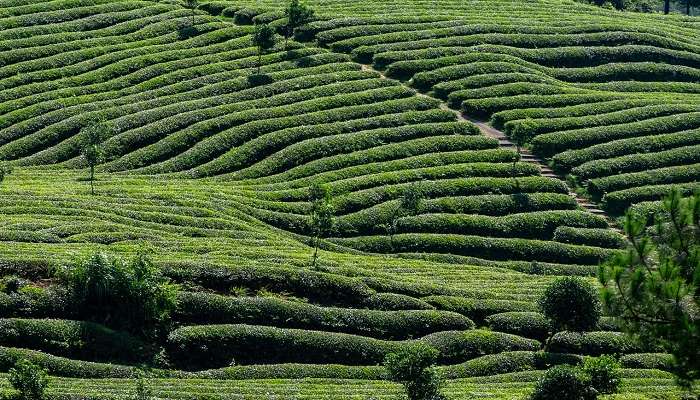
Cinnamon Tea Estate is a historic and picturesque tea garden. Established in 1850 by Maniram Dewan, a sirastadar under the British government, it is the first tea garden of Assam. The estate is renowned for its tea and offers a ravishing view of lush greenery during the peak harvest seasons. Visitors can enjoy a leisurely walk on the narrow lanes bounded by short tea bushes. Visitors to Cinnamora are treated to the fresh aroma of tea leaves and can learn about traditional methods of tea cultivation.
They can also taste various grades of tea. The estate offers a unique opportunity to observe the cultivation, plucking, and processing of tea leaves, providing insight into the rich heritage and techniques of tea production in one of the world’s most renowned regions. It is open Monday through Saturday, 9:00 AM to 5:00 PM.
Distance From Jorhat: 5.3 Km
Travel Time From Jorhat: 12 minutes
Entry Fees: Free
Best Time to Visit: October to April
Further Read: Places To Visit In Assam In May
Jorhat in Assam is a special place with a rich history, interesting culture, and beautiful nature. It has green tea gardens, old places to visit, and busy markets. Try fresh tea, see old temples, or learn about local customs. Visiting Jorhat is a memorable experience. Want to see the amazing things in Assam? Make sure to visit Jorhat and the places around it. Book your trip to Assam today and go on a journey that will awaken your senses and create lasting memories. Let this region’s enchanting landscapes, warm hospitality, and rich heritage captivate you. Your Assamese adventure awaits!
For our editorial codes of conduct and copyright disclaimer, please click here.
Cover Image Credit: Shrikant Bansod for Wikipedia
Frequently Asked Questions About Jorhat
What is Jorhat famous for?
Jorhat is renowned for its rich cultural heritage, including mosques, tombs, and gardens. Most notably, it is recognised as the 'Tea Capital of India' due to its extensive tea plantations.
Why is Jorhat called the Knowledge City of Assam?
Jorhat earned the title 'Knowledge City of Assam' because of its profound literary legacy, rich cultural heritage, and significant contributions to the arts. It hosts several literary societies, including the influential Assam Sahitya Sabha.
Who shifted the Ahom capital to Jorhat?
The Ahom king Gaurinath Singha moved the capital from Sibsagar to Jorhat in the year 1794, marking a pivotal moment in the history of the region.
Is Jorhat a big city?
Yes, Jorhat is one of the major cities in Assam, second in importance after Guwahati. It has a population of approximately 153,736 and covers an area of 72.8 square kilometres.
Is Jorhat a metro city?
No, Jorhat is not classified as a metropolitan city. Jorhat is a significant urban centre in Assam known for its tea gardens and cultural richness, but it’s not classified as a metropolitan city.
People Also Read:
Temples In Assam Tourist Places In Assam River Rafting In Assam

With a passion for exploring and travelling to the roads long forgotten, experience the world through enthralling stories and adventures. Join me as I share my experiences at some of the world’s most popular tourist destinations and quench that pestering curiosity with something exciting!











